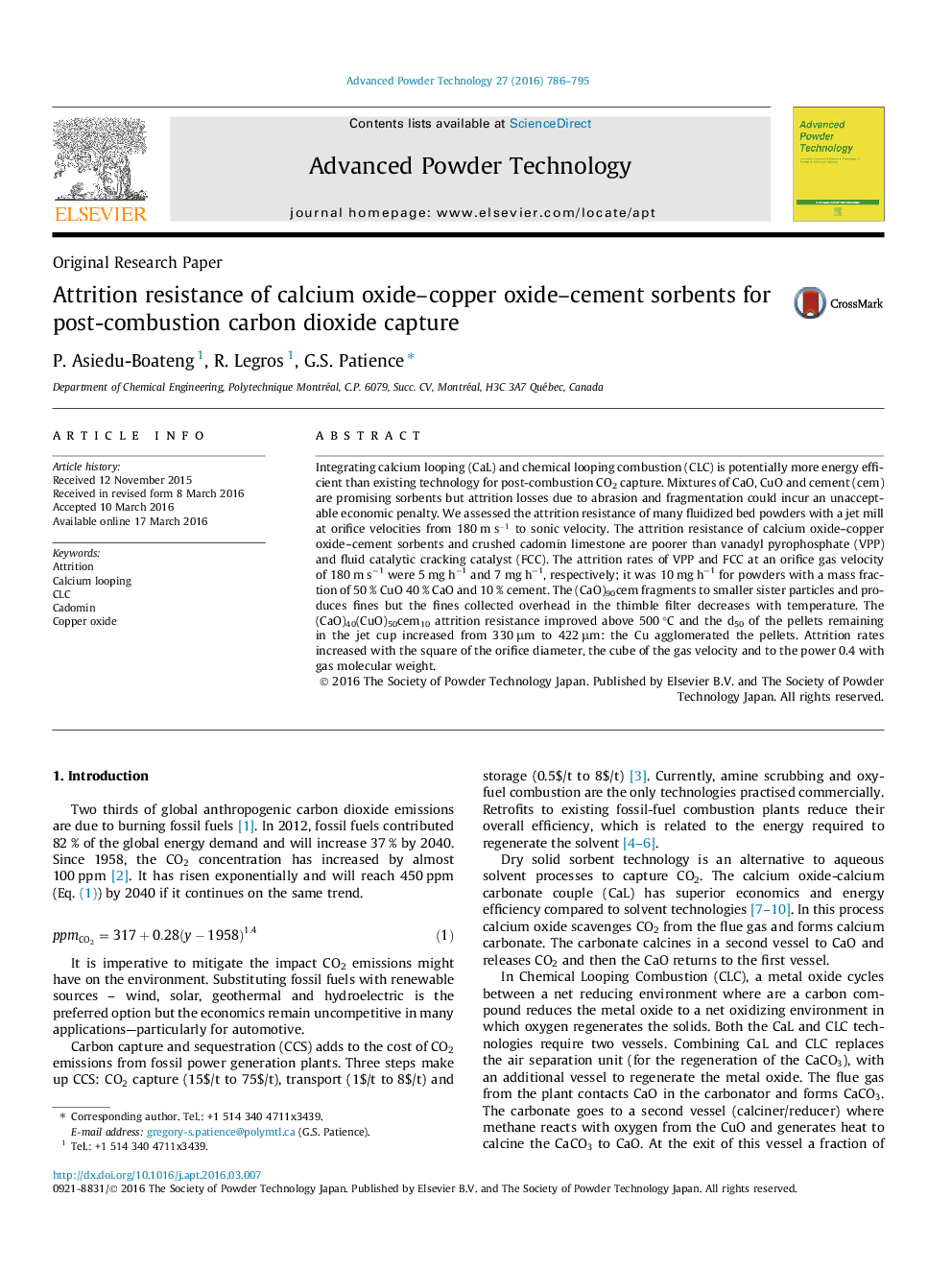| Article ID | Journal | Published Year | Pages | File Type |
|---|---|---|---|---|
| 144158 | Advanced Powder Technology | 2016 | 10 Pages |
•The attrition rates of calcium sorbets are higher than FCC catalyst or VPP.•At 800 °C, CaO–CuO–cement srobents agglomerate; at 25 °C they fracture and attrit.•The ASTM-D-5757 standard velocity shatters commercial core–shell VPP catalysts.•Attrition rates increase with the square of the orifice diameter.•The attrition rates increase with the gas velocity cubed.
Integrating calcium looping (CaL) and chemical looping combustion (CLC) is potentially more energy efficient than existing technology for post-combustion CO2 capture. Mixtures of CaO, CuO and cement (cem) are promising sorbents but attrition losses due to abrasion and fragmentation could incur an unacceptable economic penalty. We assessed the attrition resistance of many fluidized bed powders with a jet mill at orifice velocities from 180ms-1 to sonic velocity. The attrition resistance of calcium oxide–copper oxide–cement sorbents and crushed cadomin limestone are poorer than vanadyl pyrophosphate (VPP) and fluid catalytic cracking catalyst (FCC). The attrition rates of VPP and FCC at an orifice gas velocity of 180 m s−1 were 5 mg h−1 and 7 mg h−1, respectively; it was 10 mg h−1 for powders with a mass fraction of 50 % CuO 40 % CaO and 10 % cement. The (CaO)90cem fragments to smaller sister particles and produces fines but the fines collected overhead in the thimble filter decreases with temperature. The (CaO)40(CuO)50cem10 attrition resistance improved above 500 °C and the d50 of the pellets remaining in the jet cup increased from 330 μm to 422 μm: the Cu agglomerated the pellets. Attrition rates increased with the square of the orifice diameter, the cube of the gas velocity and to the power 0.4 with gas molecular weight.
Graphical abstractFigure optionsDownload full-size imageDownload as PowerPoint slide
